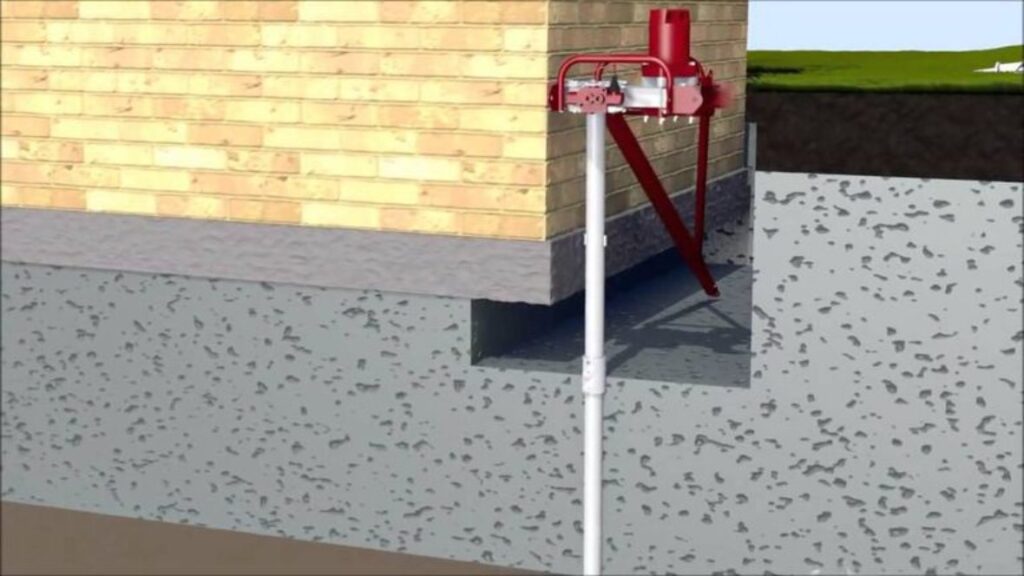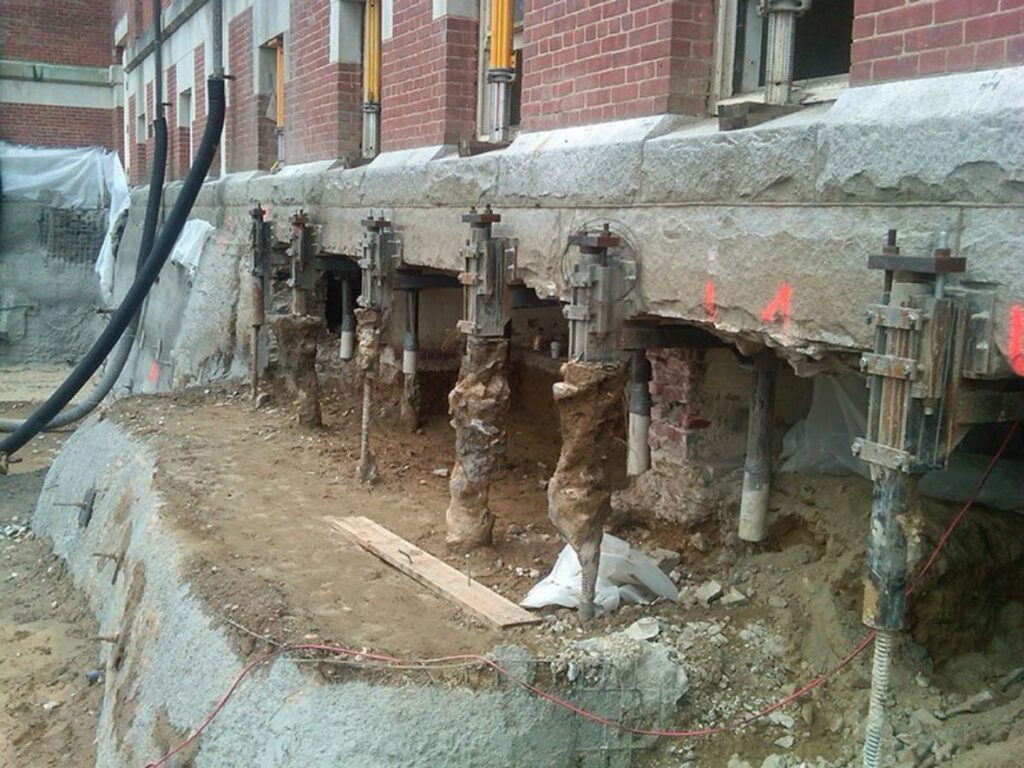All you need to know about underpinning

In last month’s post, we took a look at the issue of subsidence and settlement, and while we covered a lot, we didn’t quite cover everything. And so, as promised, we’re back to take a look at some remedial solutions that are available if you’re dealing with the issue of subsidence.
The first thing to mention is that there are number of different options available to you, and the one that’s right for you will depend upon just how much movement has occurred.

IDENTIFYING STABILITY
You can’t carry out remedial works without first ensuring that the building is stable. You’ll remember from our last post that subsidence is the downward movement of a building that’s caused by the loss of support beneath the foundations. Because of this, you need to check the level of support that’s still available.
In some cases, it might be determined that further movement is unlikely and that you just need to repair the superstructure. This usually involves cosmetic repairs (such as filling cracks), followed by decoration. But if the investigation determines that progressive moment will keep occurring then it might not be that easy. It may be a case of replacing damaging drains and pruning or removing any trees that are in close proximity to the property. It depends what’s causing the subsidence.
But if none of these options are appropriate then the next option is direct remedial works to the superstructure in the form of underpinning.
THE DIFFERENT TYPES OF UNDERPINNING
Once you’ve determined that underpinning is the way to go, the next step is to identify which type of underpinning will work best. Here are the main options you’re likely to come across:
- Traditional Underpinning: This method stabilises the existing wall foundations by digging under the present foundations in sequenced bays to a depth where firm strata exists and replacing the excavated material with mass concrete.
- Needle Beams: This method stabilises wall foundations through the use of piles installed either side of an existing wall. A small pocket is broken out below ground level and a reinforced concrete needle beam is cast in-situ connecting the piles and supporting the wall.
- Cantilever Beams: This method stabilises existing wall foundations either internally or externally (whichever is the most appropriate). Two mini-piles are installed (one compression and one tension) and then a pocket is broken out into the existing wall and a reinforced concrete beam is cast to link the two piles.
- Mini Piling: This method stabilises existing wall foundations for whole rooms or buildings. Mini-piles are installed within the property and capped with an integral reinforced concrete raft.

KEY FACTORS
As you can imagine, each of these options has its own advantages and disadvantages that will need to be assessed on a project-by-project basis. The most common factors that we’d take into consideration include:
- Loading capability
- Bearing strata
- Costs
- Existing foundation
- Occupants remaining in property
- Restricting access
ABOUT LSY
We here at LSY are involved in underpinning projects throughout the UK. If you’d like a little help, feel free to contact us. We’ll be more than happy to help!
Back to all news